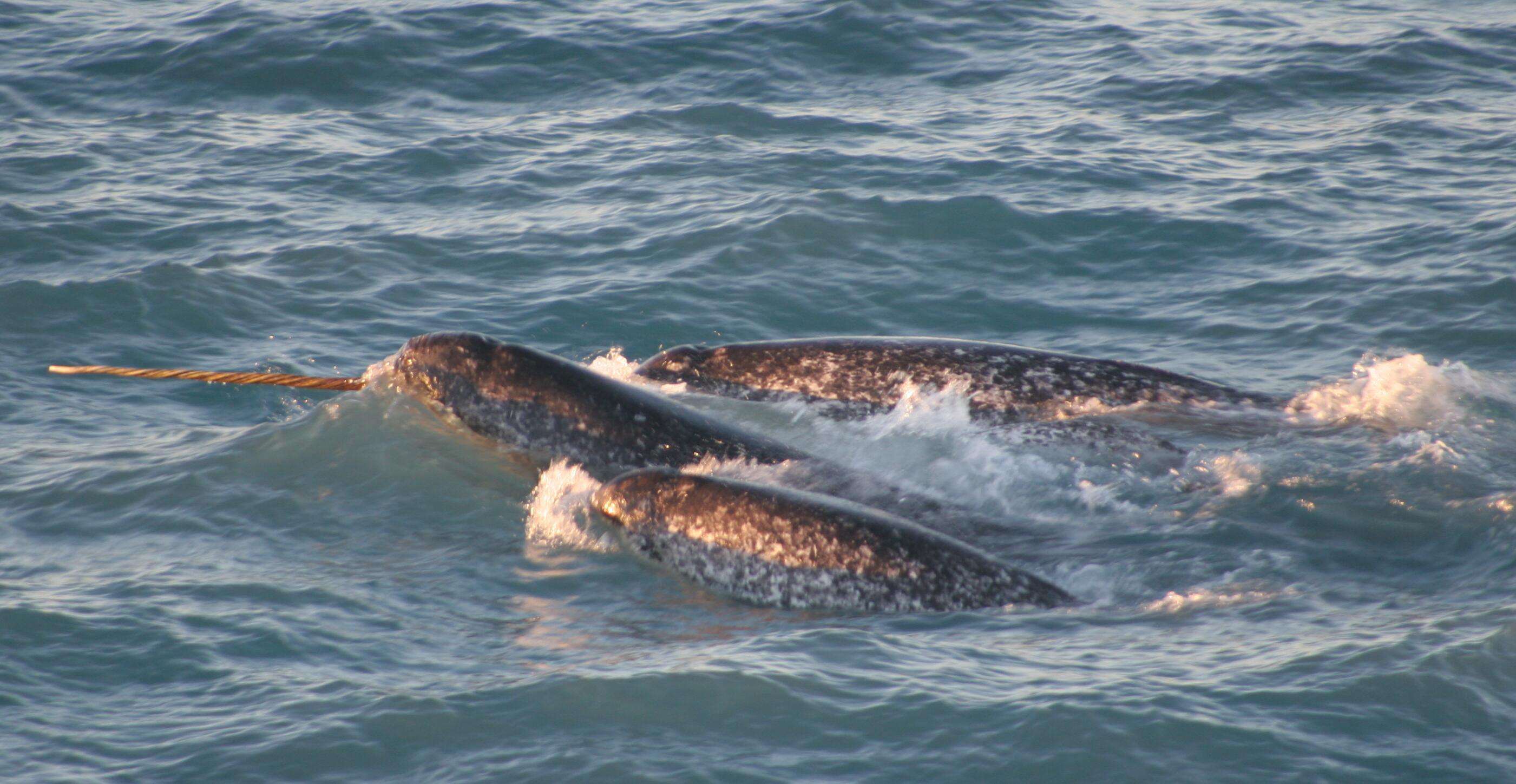New footage shows Narwhal use tusk to stun Arctic cod

Footage captured by aerial drones as part of a narwhal research camp in Tremblay Sound in north Baffin has given biologists new insights into the behaviour of narwhal.
In the footage, a narwhal can be seen using quick taps of its tusk to stun Arctic cod, so the fish are easier to devour.
In a May 12 news release, the World Wildlife Fund says the video is significant because it helps unravel the mystery of the narwhal tusk and shows that narwhals feed in their summering grounds.
The behaviour was captured by two drones belonging to documentary filmmaker Adam Ravetch and Fisheries and Oceans Canada, which led the narwhal research camp in Tremblay Sound, the WWF said.
Narwhals have a long tusk—a tooth that spirals counterclockwise from the head of adult males and a small percentage of females.
The tusk likely serves more than one purpose.
Over the years, some have suggested that it’s an ice pick and a tool for echolocation—that is, judging distance through sound waves.
it could be used to seek females in different levels of water or to sense and capture certain food.
Or the tusk, most often found on males, may be used for sexual selection—Charles Darwin suggested in the 1800s that females are attracted to the largest tusk.
Or it could be all of the above.
Recent research suggests that the tusk has thousands of nerve endings and pores that allow narwhals to sense the environment around them.
A study from 2014 said there must be a reason why narwhals are genetically evolved to grow the tusk.
Of 16 potential teeth in the narwhal, 12 are genetically silenced at birth—teeth that could be used to chomp fish.
Instead, the whale forms a tusk.
Every summer, Canada’s Lancaster Sound is home to more than 80,000 narwhals, estimated to be three quarters of the world’s population.
Fisheries and Oceans Canada, with support from WWF-Canada, the Vancouver Aquarium and the Pond Inlet Hunters and Trappers Organization, plans to continue research this year on narwhal behaviour and movements in Eclipse Sound.
Additional research through WWF-Canada’s Arctic Species Conservation Fund will seek to identify important narwhal calf rearing habitat in the region.